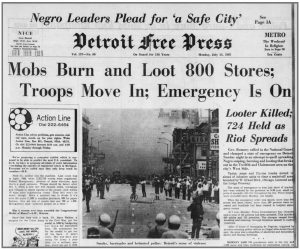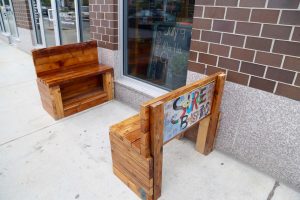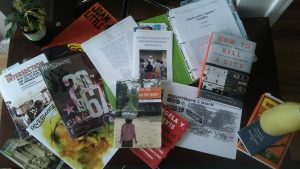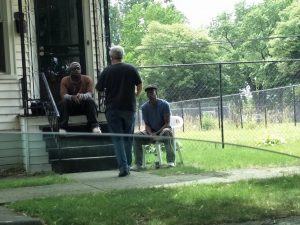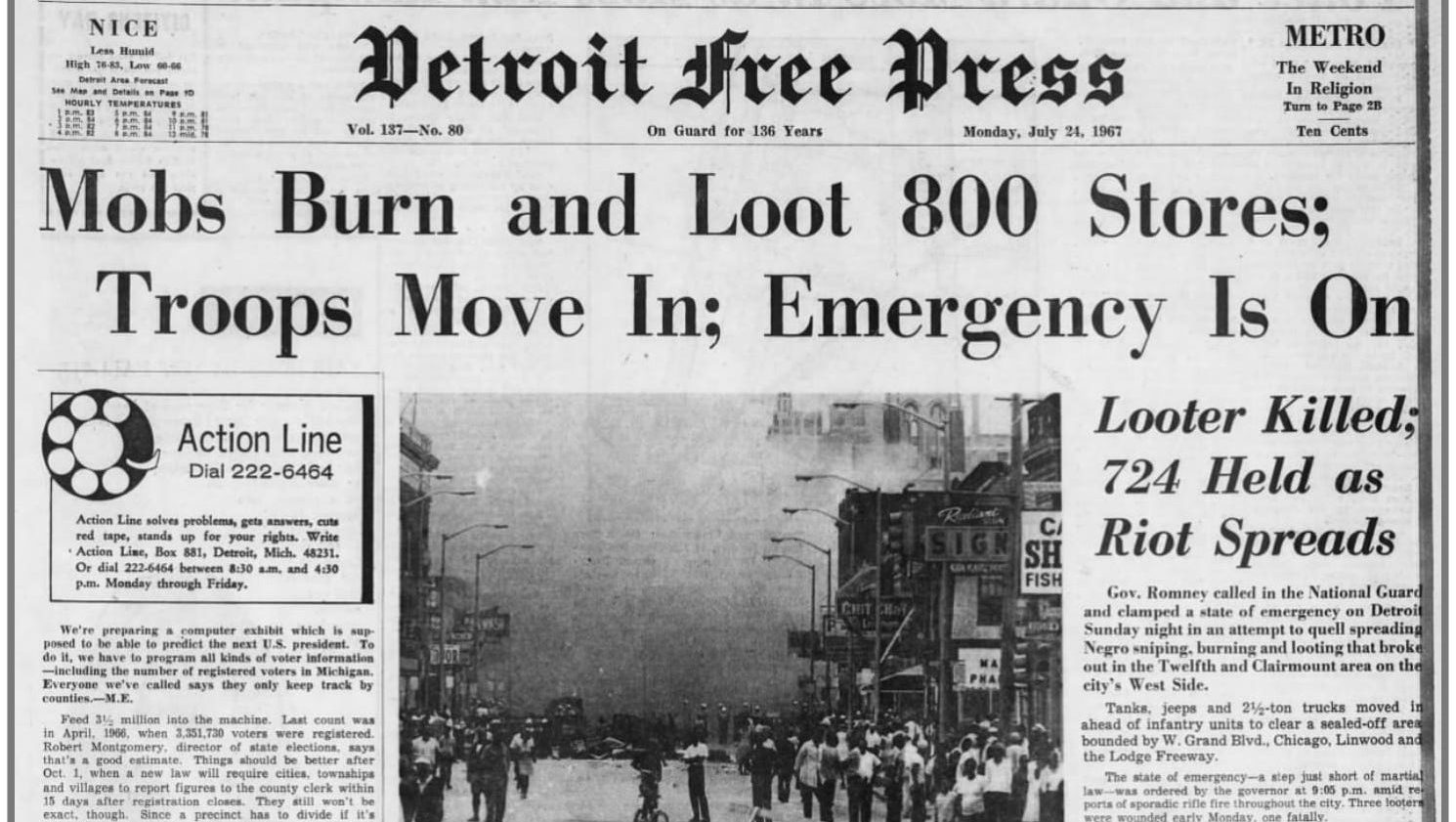In my first few weeks in Detroit, I walked into Source Booksellers, on Cass Avenue, a smart, non-fiction bookstore. When I explained to the woman behind the counter I was working on a play about the 1967 Detroit Rebellion, she nodded, knowingly. “Oh yes, everybody’s talking about the Rebellion…”
To be brief, the Detroit Rebellion, often referred to as “The Detroit Riots,” or “the Riot,” began on July 23rd, 1967, when Detroit police officers raided an unlicensed after-hours club in one of the oldest black neighborhoods in the city. Years of pent-up rage over police brutality and racial economic disparity in the black community brought hundreds to the streets that night. Over the next four days, bricks were thrown, stores were looted, and buildings were burned. City and state officials called in the National Guard, and later federal troops, to occupy the neighborhood. 7,200 people were arrested, including eight-hundred-eighty-seven women and eighty-three girls. Forty-three people were killed. Thirty-three black and ten white. The youngest was Tanya Blanding, age four, shot through the window of her home by a National Guardsman. The headlines of the Detroit Free Press and other news sources called the events a “riot” and a “mob”. Calls for control over violent rioters and looters were made. Today, “riot” and “rebellion” are both used to describe the events of July 1967, and the debate over what to call it is even more present in light of the 50th year anniversary approaching this July.
The woman I spoke with at The Source Booksellers was, Janet, the store’s owner. The impression Janet left with me was that she was leery of the 50th year anniversary excitement. It’s true that Detroit has been buzzing with the remembrance of ‘67. All over the city there are ‘67 exhibits, tours, plays and events. Nationally, the film, DETROIT, about related incidents in ‘67 premieres this August.
So I thought about how to talk to Janet about this play, After/Life. My research this summer surrounds the production of After/Life: Detroit 67, a living history play, conceived by Dr. Lisa Biggs from MSU, and directed by Gallatin Professor, Kristin Horton. Based on the stories and perspectives of women and girls before, during and after the ‘67 Rebellion, After/Life is a performance and a community-engagement project that centers women’s stories which are largely absent from the archives and the authors on ‘67. After/Life also intends to offer a platform for dialogue and relationship-building, through viewers’ and participants’ reflection on the past, the present, and the future they dream for Detroit. The show will be free and open to the public starting July 20th.
What I discerned from my conversation with Janet, was the concern that people are latching on to the sensationalism of ‘67; that they are remembering the Riot or Rebellion as a self-contained event, overlooking the conditions that catalyzed the uprising, and overlooking the similarities in conditions in Detroit, today. I wanted to explain to Janet all the reading and research the After/Life production team has been doing over the past year, to assure Janet (and myself) that After/Life is not going to make those mistakes.
I wanted to share all the conversations Lisa, Kristin and I have had bringing awareness to our positionality as people from outside Detroit. Creating ethical and accountability frameworks for this process have been integral to the project’s beginning. I wanted to explain what Lisa expressed early on in the process: that After/Life is “not the definitive story of ‘67.” It is one of many ways to open dialogue around ‘67, and it is only “a starting point,” to much longer relationships within the community… My impulse to explain to Janet was ready, but I knew better. One of the first lessons in creating community-engaged theatre (said in various ways by myriad practitioners such as Cornerstone Theatre Company, Grant Kester, Suzanne Lacy, whose work I have been researching alongside the After/Life process) is listening, not talking. It doesn’t matter how much archival research I have done, or how many conversations about the ethics of theatre-making I have had when I am meeting a new person and talking about their city’s history.
As I continue to learn from the complex city of Detroit, from conversations like my first with Janet, and from the legacies and afterlives of the ‘67 Riot/Rebellion that exist across Detroit, I look forward to seeing how the team of actors, production members and community partners of After/Life grapple with the complexities of sharing (our version of) this story.
